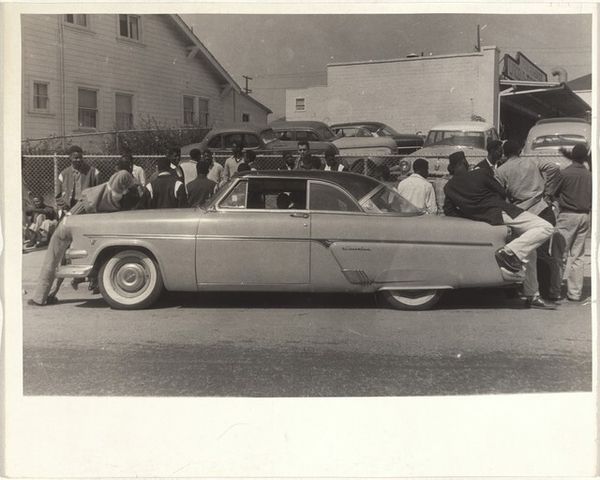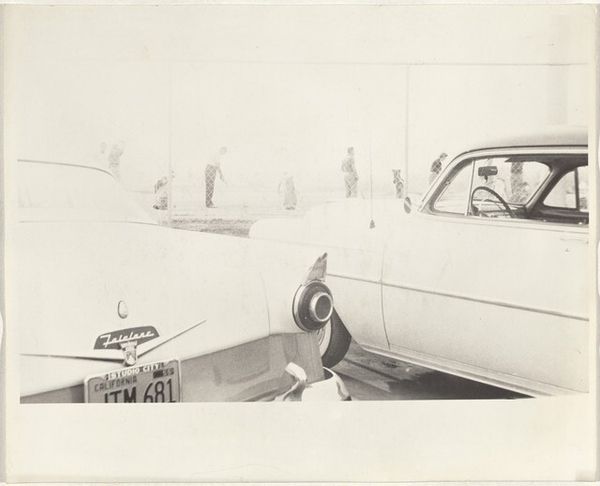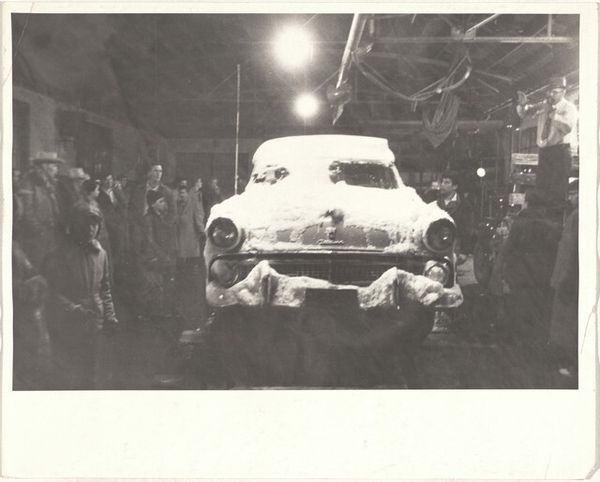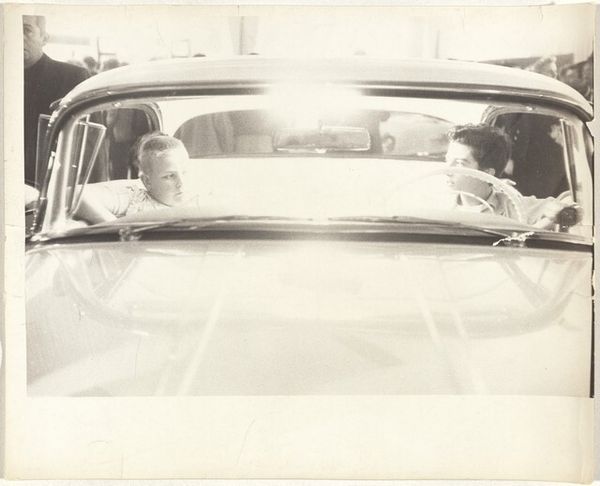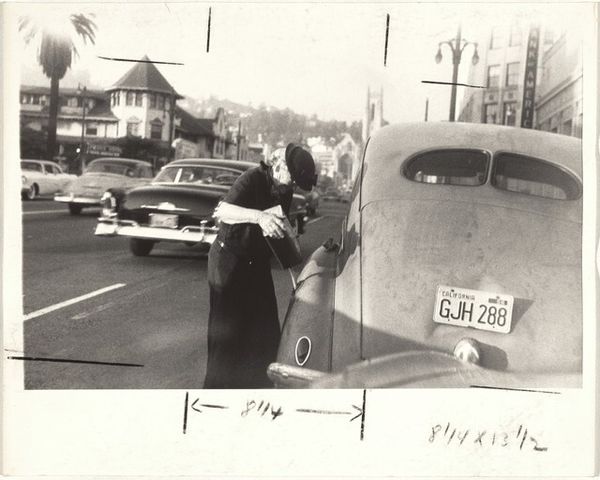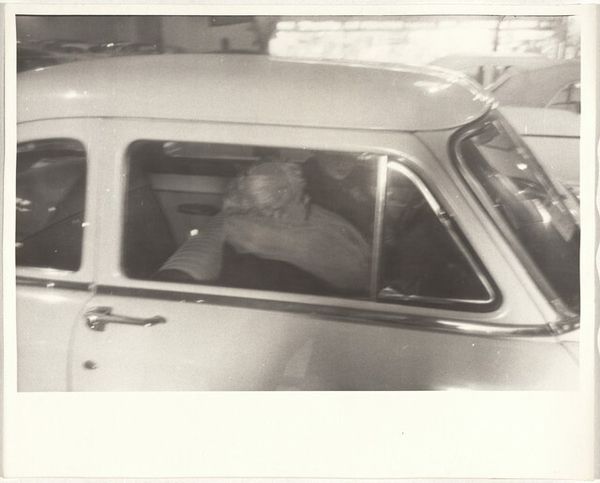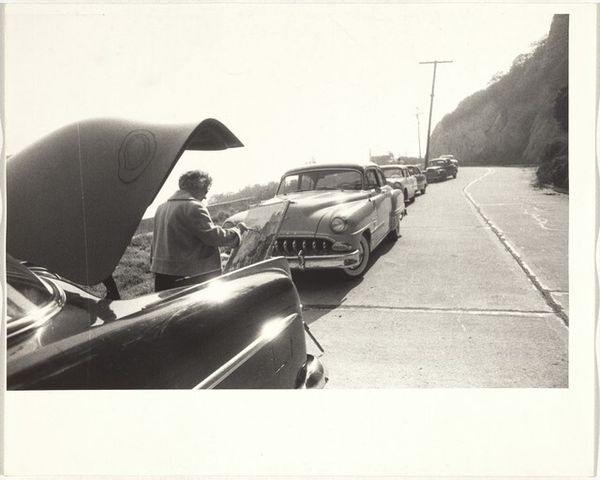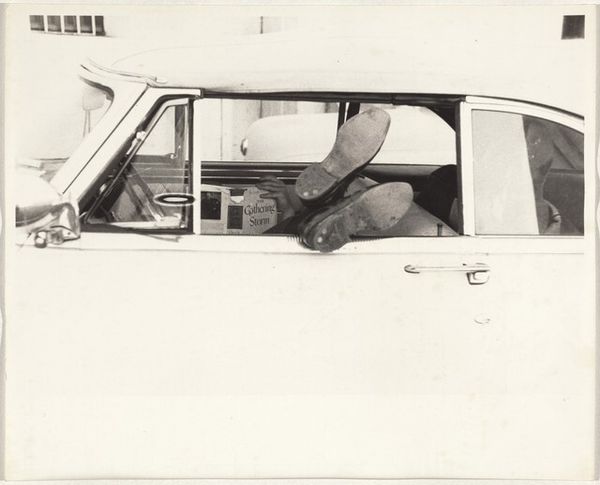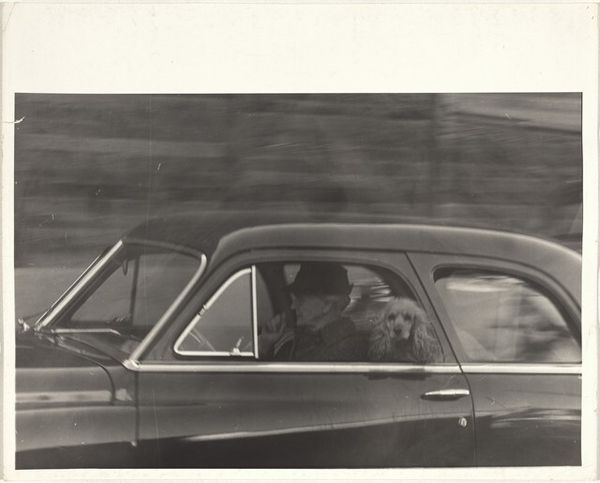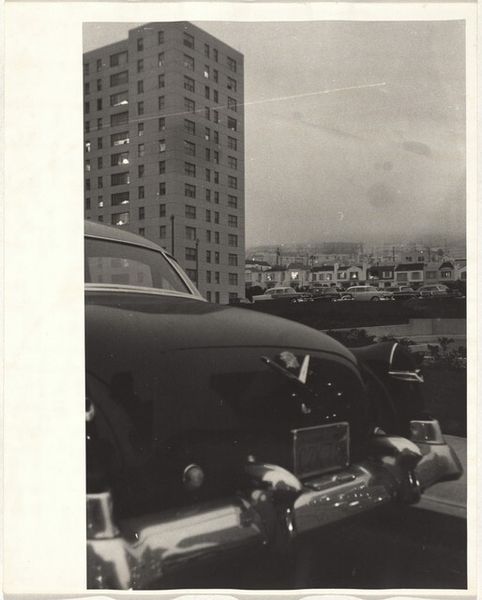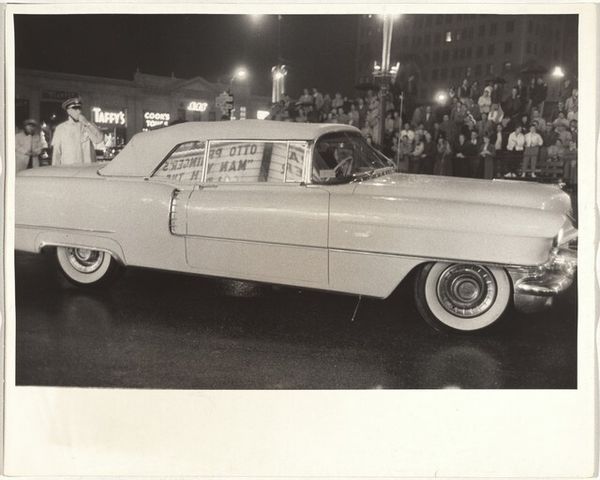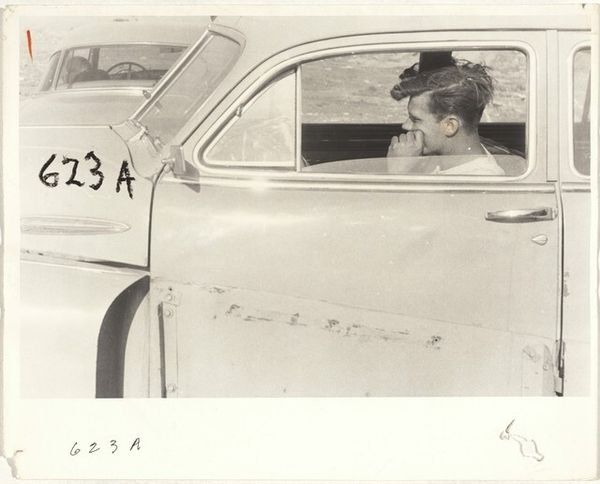
print, photography, gelatin-silver-print
# print
#
street-photography
#
photography
#
gelatin-silver-print
#
pop-art
#
cityscape
#
modernism
#
realism
Dimensions: sheet: 20.3 x 25.2 cm (8 x 9 15/16 in.)
Copyright: National Gallery of Art: CC0 1.0
Curator: Robert Frank's gelatin silver print, "Automobiles--Long Beach, California," made in 1956, offers a compelling glimpse into postwar American life. My first thought? Overwhelming! A mass of metal and implied motion all struggling for space in the frame. Editor: I agree, the visual density here is quite striking, almost claustrophobic. Note how Frank utilizes high contrast and seemingly off-kilter composition. The vehicles almost blur into each other, conveying a sense of uniformity despite the clear differences in make and model. Curator: Exactly. Semiotically, each car becomes more than just a vehicle, a marker of status and societal aspirations. They’re these hulking, gleaming emblems of upward mobility but their massing suggests a kind of conformity, a reduction of individuality. Editor: And yet, look closer at the people framed by and perched atop these automobiles. The photograph hints at the social structures in postwar America—racial segregation and a booming consumerist culture which, nevertheless, perpetuated anxieties about social status and access. Those gazing out to the horizon possibly evoke alienation. Curator: Perhaps. But formally, I read it more as Frank disrupting established photographic conventions. The composition challenges the viewer. It isn't about perfectly framed chrome; instead, it feels raw and immediate. It reminds me, aesthetically, of Walker Evans and the Photo-Secession, yet more spontaneous. Editor: Well, I also think it echoes Weegee’s unflinching social commentary in some ways. Look at Frank's famous book, *The Americans*, it certainly contains unflinching, though more intimate, perspectives on class and race during this era. Here we find themes like wealth distribution, anxieties of postwar American society, themes not overtly present, but worth digging for within the photograph. Curator: True, context does matter, and your interpretation definitely adds layers. However, what persists for me is Frank's deconstruction of photographic norms—his manipulation of light, his rejection of a clean, picturesque aesthetic—creates something far more conceptually engaging. It’s almost brutally elegant. Editor: I see the merit in both. Its power lies in its formal tension but also the societal critiques quietly at play within these complex aesthetic choices, wouldn’t you say? Curator: Absolutely. It’s the dynamic interaction of those things, I concede. Editor: It leaves a long echo, doesn't it?
Comments
No comments
Be the first to comment and join the conversation on the ultimate creative platform.
